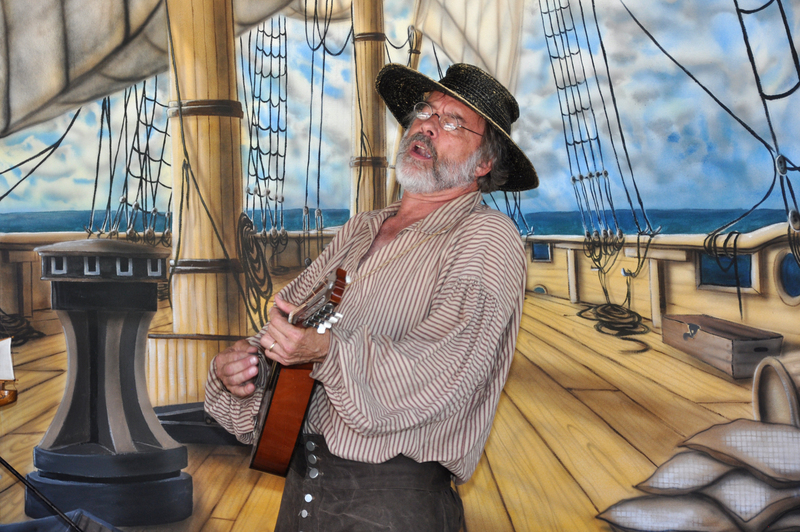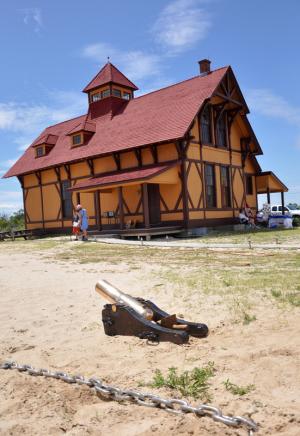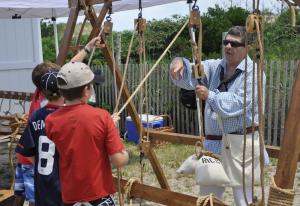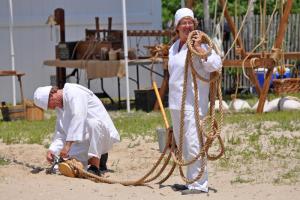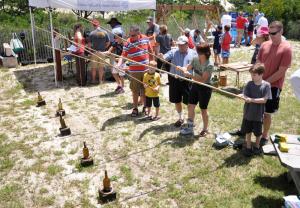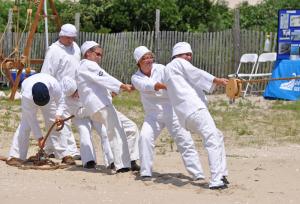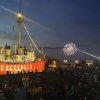The second annual Maritime Heritage Festival was held July 22 at the Indian River Life-Saving Station, where patrons were welcomed with the stories and songs of the sea from Matthew Dodd, games and face painting for children and a demonstration of the breeches buoy rescue technique.
The Indian River Life-Saving Station was built in 1876 and is one of six on coastal Delaware. Because commercial transportation in the 18th and 19th centuries was primarily by sea, rivers or canals, Congress created the U.S. Lifesaving Service to provide aid to ships in distress. Lowell Marky from the Indian River Life-Saving Station said stations were built about every five miles along the Atlantic coast as well as along the coast of the Great Lakes, California and Alaska.
"A lot of shipping was done fairly close to the coast," he said. "They'd be following lighthouses at night, and during the day they'd be following known locations along the coast."
He said mariners also used the sun and stars as ways of navigation, but were not always reliable if the night sky was cloudy or they were in the midst of a storm. Another way to make navigation easier was the life-saving stations themselves. Each station was painted a different color to distinguish itself and make it easier on mariners.
Because most of the water travel was close to the coast, shipwrecks often occurred within a few hundred yards of the beach. Most people in the 1700 and 1800s did not know how to swim, so shipwrecks often resulted in many casualties, Marky said.
The creation of the lifesaving service in 1871 was a way of helping. Surf men working at each station used one of two techniques when attempting to rescue people from a ship in distress. On calm days, they could row a rescue boat out to the boat and bring mariners or passengers back to shore. If the wreck occurred during a storm, as many did, it wouldn't be safe for the surf men to attempt a rescue, so they created the breeches buoy rescue technique.
"The surf men stayed on shore and brought the mariners on shore with the breeches buoy," Marky said. "It was safer for everybody."
The surf men would fire a shot line attached to a 17-pound projectile from a Lyle gun over the mast of a distressed ship. A tally board in English and French would be sent up the line with instructions on how the rescue would occur. After a whip line and hawser line were secured, mariners would be brought to shore one by one in the breeches buoy - a buoy with paints sewn in. In many cases, mariners never touched the ocean, Marky said.
While volunteers just missed the shot over the mast during the July 22 demonstration, Marky said, the surf men were very skilled at the technique and could complete in a timely manner.
"Every Thursday in lifesaving stations up and down the U.S. coast they practiced this breeches buoy drill all day long," he said.











